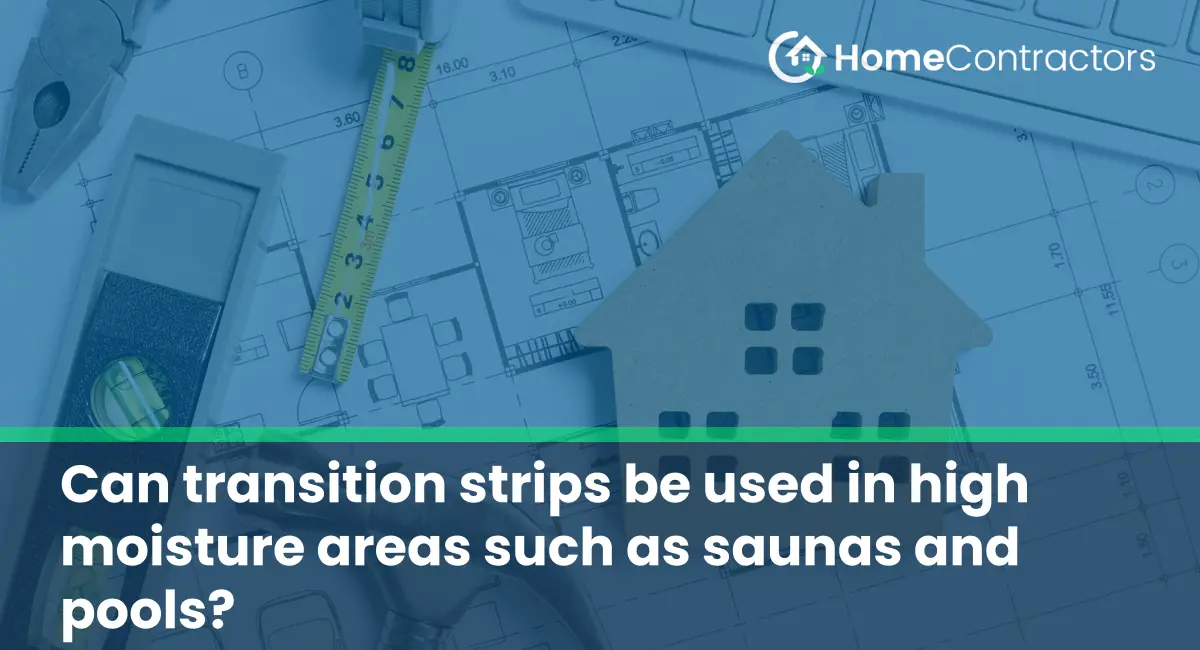Transition strips are crucial components used in flooring installations to bridge the gap between two different types of flooring materials or different floor heights. They provide a seamless transition between rooms or areas with different flooring types, protecting edges from potential damage and minimizing trip hazards. However, when it comes to high moisture areas such as saunas and pools, the question arises whether transition strips can withstand the harsh conditions. This article will explore the feasibility of using transition strips in such environments and discuss alternative options if necessary.
Understanding Transition Strips
Before delving into their suitability for high moisture areas, it is essential to understand the composition and purpose of transition strips. These strips are typically made from durable materials like aluminum, rubber, wood, or vinyl. They come in various shapes and sizes, including T-moldings, reducers, thresholds, and stair nosing. The primary function of a transition strip is to create a smooth and visually appealing transition between different flooring materials while providing protection to the edges.
Challenges of High Moisture Areas
High moisture areas, such as saunas and pools, present unique challenges for any flooring material or component. The extreme humidity, regular exposure to water, and potential for standing water make it necessary to choose materials that can withstand these conditions without warping, rotting, or deteriorating. In these environments, any flooring component, including transition strips, must be capable of resisting water damage and the growth of mold or mildew.
Suitability of Transition Strips in High Moisture Areas
While transition strips can be used in high moisture areas, their suitability ultimately depends on the material used and the specific conditions they will be exposed to. Here, we will analyze the resistance of common transition strip materials to determine their potential in saunas and pool areas:
- Aluminum: Aluminum transition strips are highly resistant to moisture, making them a suitable choice for high humidity environments. They do not rust or corrode, ensuring their durability even when exposed to water regularly. However, it is important to ensure that the adhesive used to secure the strip is also water-resistant to maintain its efficacy.
- Rubber or Vinyl: Both rubber and vinyl transition strips are moisture-resistant and often come with waterproof properties. They have the added advantage of being highly flexible and easy to clean. However, it is crucial to ensure that the particular product selected is explicitly designed for high moisture areas to ensure its suitability.
- Wood: Wood transition strips can be used in high moisture areas, provided they are properly sealed and regularly maintained. Natural wood is susceptible to water damage and can warp, rot, or grow mold if not adequately protected. Applying a waterproof sealant or using a treated wood option can enhance its resistance to moisture.
Alternative Options for High Moisture Areas
If transition strips are not a suitable option due to the extreme conditions of saunas and pool areas, alternative solutions can still be employed to maintain a seamless flooring transition. Some alternatives include:
- Flexible Sealants: Instead of traditional transition strips, flexible sealants can be used to fill the gap between different flooring materials. These sealants are typically made from silicone or polyurethane and are designed to withstand high moisture areas. They provide a water-tight seal and can accommodate floor movement, ensuring long-lasting performance.
- Flush Transitions: In certain scenarios, it may be possible to create a flush transition between flooring materials without the need for a separate transition strip. This can be achieved by carefully selecting materials with compatible thicknesses or by using beveled edge tiles to create a smooth transition between the two floors.
Transition strips are versatile components that offer practical and aesthetic benefits in flooring installations. While they can be used in high moisture areas such as saunas and pool areas, their suitability depends on the material used and the specific conditions they will endure. Aluminum, rubber, vinyl, and properly sealed wood transition strips can withstand the challenges of these environments. However, if transition strips are not a viable option, alternative solutions such as flexible sealants or flush transitions can be employed to achieve a seamless flooring transition. Ultimately, the choice must prioritize durability and resistance to moisture to ensure a long-lasting and visually cohesive flooring installation.
